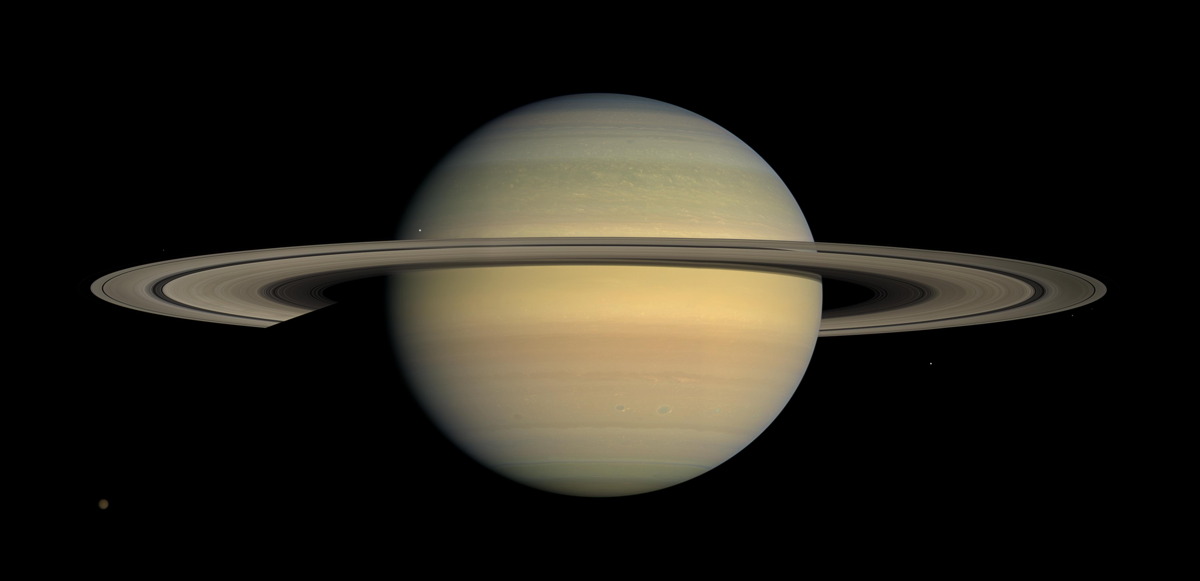Saturn's Gorgeous Rings May Be Dwarf Planet Carcasses

The rings of Saturn, Neptune and Uranus are composed of pieces of Pluto-like dwarf planets that strayed too close to the giant worlds long ago, a new study suggests.
Astronomers think that thousands of Pluto-size bodies once dwelled in the Kuiper Belt — the ring of frigid objects beyond Neptune's orbit — shortly after the solar system formed. But things changed about 4 billion years ago, the idea goes: At that time, Jupiter, Saturn, Uranus and Neptune migrated a bit, stirring up both the Kuiper Belt and the main asteroid belt between Mars and Jupiter.
The resulting gravitational jostles sent many objects in these two realms careening toward the inner solar system, causing an era of increased cosmic impacts known as the Late Heavy Bombardment. [Photos: The Rings and Moons of Saturn]
In the new study, a team of researchers led by Ryuki Hyodo, of Kobe University in Japan, calculated that a fair number of scattered Kuiper Belt objects probably zoomed past the giant planets during this period. In fact, the group found, multiple Pluto-size bodies probably came close enough to Saturn, Uranus and Neptune to get torn apart by the planets' powerful gravitational tugs.
Furthermore, computer simulations performed by the group suggest that, in some cases, up to 10 percent of a shattered dwarf's mass was captured into orbit around the planet that destroyed it. In addition, these captured fragments have probably slammed into each other repeatedly over the eons, creating the tiny pieces that make up the rings of Saturn, Uranus and Neptune today, study team members said.
Saturn's rings are about 95 percent water ice, while those of Uranus and Neptune are darker and appear to be composed of rockier material. And the dwarf-planet theory can explain this difference, researchers said.
Uranus and Neptune are considerably denser than Saturn, and can therefore exert a more powerful gravitational pull on passing objects. (Bodies flying close enough to Saturn to feel a comparable tug would actually impact the planet's atmosphere, researchers said.) So Uranus and Neptune probably snagged the rocky cores of more dwarf planets, whereas Saturn just stripped off such objects' icy outer layers, the researchers said.
Breaking space news, the latest updates on rocket launches, skywatching events and more!
"These findings illustrate that the rings of giant planets are natural byproducts of the formation process of the planets in our solar system," representatives of Kobe University wrote in a news release about the new research, which was published last month in the journal Icarus.
"This implies that giant planets discovered around other stars likely have rings formed by a similar process," they added. "Discovery of a ring system around an exoplanet has been recently reported, and further discoveries of rings and satellites around exoplanets will advance our understanding of their origin."
Follow Mike Wall on Twitter @michaeldwall and Google+. Follow us @Spacedotcom, Facebook or Google+. Originally published on Space.com.

Michael Wall is a Senior Space Writer with Space.com and joined the team in 2010. He primarily covers exoplanets, spaceflight and military space, but has been known to dabble in the space art beat. His book about the search for alien life, "Out There," was published on Nov. 13, 2018. Before becoming a science writer, Michael worked as a herpetologist and wildlife biologist. He has a Ph.D. in evolutionary biology from the University of Sydney, Australia, a bachelor's degree from the University of Arizona, and a graduate certificate in science writing from the University of California, Santa Cruz. To find out what his latest project is, you can follow Michael on Twitter.

